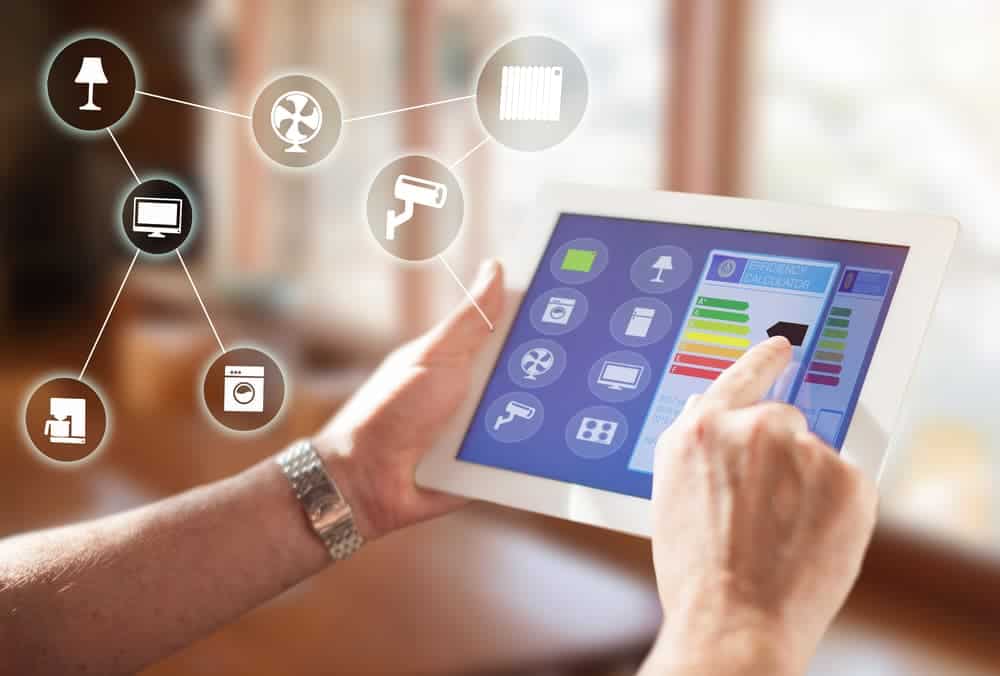When you’re running a large commercial building, you want to make sure that it’s being used to its full potential. After all, wasting energy means wasting money. This is where making full use of a Building Management System (BMS) is key. In this article, we discuss what a BMS is, the parts of the building it controls and the main benefits of using a BMS.
What is the purpose of a Building Management System?
Put simply, a Building Management System allows for a greater degree of control over all the facilities present in a building. An integral part of modern buildings, they monitor and control the building’s mechanical and electrical systems such as heating, ventilation, lighting and Hydronics.
Essential for the safe and efficient operation of a building, a BMS maintains environmental conditions, keeps equipment operating efficiently and allows facility personnel/building owners to monitor the plant operations. Through monitoring environmental conditions with sensors, the BMS control process produces corrective actions, such as driving outputs or actuators, in response to changing conditions.
Components of a Building Management System
A Building Management System (BMS) is an intricate network made of 3 distinct parts: hardware, software, and user interface components, each playing a vital role in the overall functionality and effectiveness of the system.
Part 1: The Hardware
Sensors and Actuators
These are the fundamental hardware components of a BMS. Sensors collect data on various environmental parameters such as temperature, humidity, light levels, motion, smoke presence, and more. Actuators, on the other hand, are devices that take action based on the sensor inputs, such as adjusting the heating, ventilation, air conditioning (HVAC) systems, lighting, or triggering alarms.
Controllers
These are the brains of the BMS hardware. Controllers receive data from sensors and send commands to actuators. They are programmed to make decisions based on the sensor data, following predefined criteria to maintain the desired environmental conditions.
Networking Hardware
This includes routers, switches, and other networking devices that enable communication between sensors, controllers, actuators, and the central BMS server. These components ensure that data flows seamlessly across the system.
Part 2: The Software
Data Processing and Analytics
BMS software is responsible for processing the data collected by sensors. It analyses this data to identify trends, detect anomalies, and make decisions. Advanced BMS software uses algorithms and machine learning techniques for more sophisticated data analysis.
System Management Tools
These tools allow facility managers to configure and manage the BMS. This includes setting parameters for environmental controls, scheduling maintenance activities, and customising alerts and notifications.
Database Management
The software includes a database system to store historical data, which is vital for trend analysis, reporting, and decision-making processes.
Part 3: The User Interface
Dashboards and Control Panels
The user interface of a BMS is typically a dashboard accessible via computer or mobile devices. These dashboards present real-time data, alerts, and system statuses in a user-friendly format. They allow operators to monitor the entire building’s systems at a glance and make adjustments as needed.
Accessibility and Customisation
Modern BMS interfaces are designed for ease of use, offering customisable views to suit different user preferences and roles. They often feature intuitive controls for adjusting system settings, scheduling tasks, and accessing reports.
Remote Access and Notifications
With advancements in cloud computing, many BMS offer remote access capabilities, enabling facility managers to monitor and control building systems from anywhere. This feature is particularly beneficial for managing multiple buildings or for quick responses to emergencies.

Which aspects of a building does a Building Management System control?
The aspects of your building are controlled by a Building Management System depending on your project requirements as each building type should have its environmental controls configured dependent on the needs of the building and/or occupants.
Below are just a few of the aspects a Building Management System can control:
Heating/Cooling
Temperature control and monitoring are one of the most common functions of Building Management Systems. Temperature sensor readings provide vital information from which the BMS can control the heating and/or cooling to maintain comfort conditions, which can optimise occupant productivity.
Ventilation
Building Management Systems control the ventilation systems of a property to regulate the airflow to meet demand within spaces and achieve a better indoor climate. By utilising carbon dioxide sensors, the BMS can be used to control air quality. Occupant well-being is improved by maintaining ventilation and fresh air levels.
Air Pressure
Air pressure control and monitoring are an integral part of a Building Management System. From extract to air movement applications that are key to ensure air movement within a building and the equipment used to deliver this are kept as efficient as possible.
Lights
A Building Management System can control the lights in a property and use motion sensors, light level sensors and timers as a means of lighting spaces only when required to save energy.
Access control
Companies use Building Management Systems as a means of ensuring that only people with the right accreditation enter buildings through the use of card readers and RFID sensors.
Predictive Maintenance
A key feature of modern Building Management Systems (BMS) is their ability to facilitate predictive maintenance. This is a proactive approach that anticipates issues before they escalate into major problems. Unlike traditional reactive maintenance, which addresses problems after they occur, predictive maintenance uses data analytics and monitoring to predict equipment failures and inefficiencies.
Fault Detection and Diagnostics (FDD)
BMS are equipped with advanced Fault Detection and Diagnostics capabilities. These systems continuously monitor and analyze data from various building components, like HVAC systems, lighting, and electrical systems. By doing so, they can detect anomalies and patterns that indicate potential problems or inefficiencies.
What are the benefits of a Building Management System?
- Improved energy efficiency through control on demand, not only saving on energy and improving a company’s environmental credentials but also saving a significant amount of money in the long term
- Improved well-being and productivity for the occupants
- Improved visibility of the building performance through trending and monitoring, building owners and facilities managers benefit from assessment of historic trend logs and alarm indication of faults
- Reactive maintenance for predicting when plant equipment needs replacing or servicing before it goes into fault.
- BMS help minimize downtime, ensuring that building operations run smoothly and without interruption.
The Future of Building Management Systems
The landscape of Building Management Systems (BMS) is poised for transformative changes, driven by technological advancements and shifting priorities towards sustainability. Here’s a deeper look into what the future holds:
- Holistic Urban Management: Future BMS are expected to integrate seamlessly with smart city frameworks, contributing to holistic urban management. This includes real-time data exchange between buildings and urban services like energy grids, transportation systems, and emergency services.
- Smarter Building Operations: The integration of Artificial Intelligence (AI) in BMS will lead to smarter, more autonomous building operations. AI algorithms can analyse complex data patterns to optimize energy use, predict maintenance needs, and enhance occupant comfort.
- Green Building Trends: As the global focus on sustainability intensifies, BMS will be at the forefront of the green building movement. Future systems will prioritize energy efficiency and the reduction of carbon footprints, integrating renewable energy sources and employing strategies like demand-response to lessen environmental impact.
- Regulatory Compliance: With governments around the world implementing stricter environmental regulations, BMS will evolve to ensure compliance, helping building owners navigate and meet these new standards.
- Focus on Occupant Health: Emerging trends in BMS also include a greater emphasis on occupant health and well-being. Systems will monitor and adjust environmental factors such as air quality, lighting, and temperature to create healthier and more productive spaces.

Try Titan Products
At Titan Products, we simplify the complex to help our customers create truly smart spaces promoting well-being, comfort, safety and energy efficiency. Our range of HVAC and smart building products and services provide innovative monitoring & control solutions for residential, education, retail, hospitality and healthcare settings.
If you’re interested in having more control over your building, giving efficient control and saving money for years to come, try our environmental sensors and controllers.
